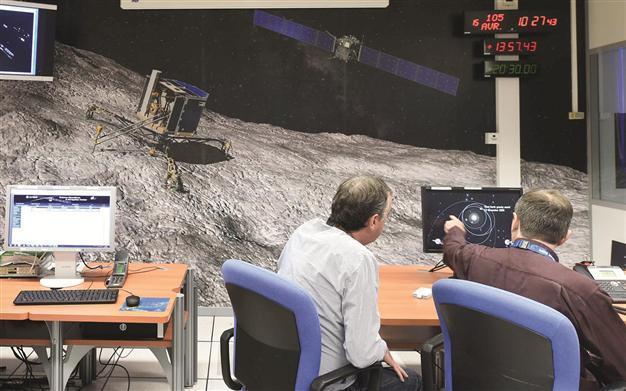Comet-chaser nears prey after crossing kilometers
PARIS - Agence France-Presse

Scientists monitor the first data transmitted by comet-chasing probe Rosetta.
After a decade-long quest spanning six billion kilometers, a European probe will come face to face Aug. 6 with a comet, one of the Solar System’s enigmatic wanderers.
The moment will mark a key phase of the most ambitious project ever undertaken by the European Space Agency (ESA), a 1.3 billion euro bid to get to know these timeless space rovers.
More than 400 million km from where it was launched in March 2004, the spacecraft Rosetta will finally meet up with its prey, Comet 67P/Churyumov-Gerasimenko.
To get there, Rosetta has had to make four flybys of Mars and Earth, using their gravitational force as a slingshot to build up speed, and then entering a 31-month hibernation as light from the distant Sun became too weak for its solar panels. It was awakened in January.
After braking maneuvers, the three-tonne craft should on Aug. 6 be about 100 km from the comet, a navigational feat that, if all goes well, will be followed by glittering scientific rewards.
“It’s taken more than 10 years to get here,” said Sylvain Lodiot, spacecraft operations manager. “Now we have to learn how to dock with the comet, and stay with it for the months ahead.”
Blazing across the sky as they loop around the Sun, comets have long been considered portents of wonderful or terrible events, the birth and death of kings, bountiful harvests or famines, floods or earthquakes.
Astrophysicists, though, see them rather differently. Comets, they believe, are clusters of the oldest dust and ice in the Solar System, the rubble left from the formation of the planets 4.6 billion years ago.
